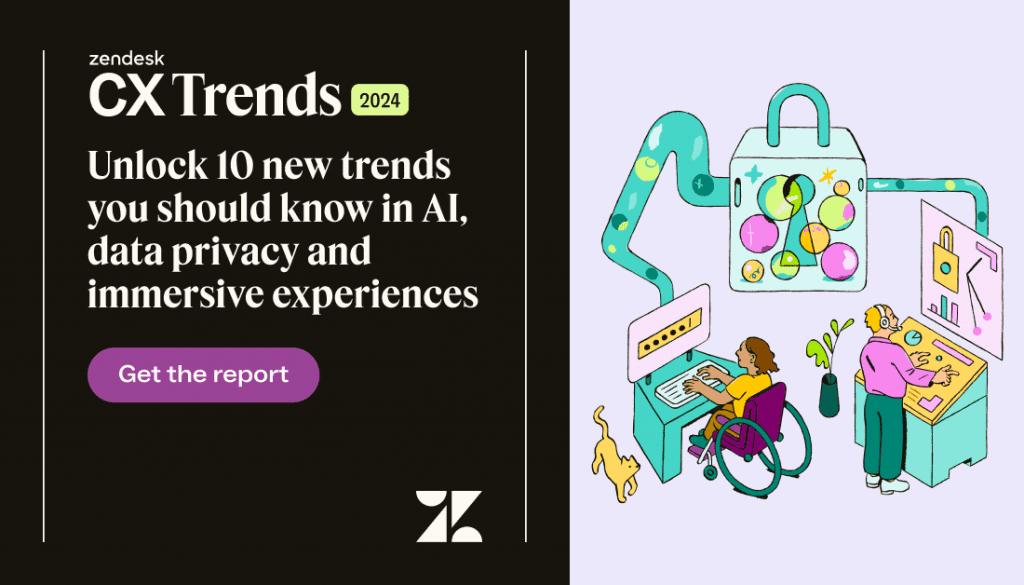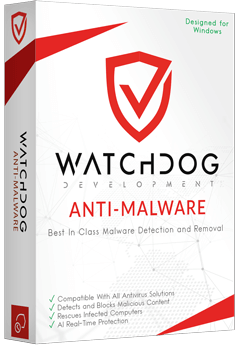In today’s digital-first world, cybersecurity is, sadly, a business necessity. For companies of all sizes, the stakes couldn’t be higher. Data breaches, ransomware attacks, phishing scams—they’re not just IT problems; they’re business problems. A single breach can devastate a company’s finances, reputation, and customer trust.
Disclosure: If you click on my affiliate/advertiser’s links, I am going to receive a tiny commission. AND… Most of the time, you will receive an offer of some kind. It’ s a Win/Win!
When I think about cybersecurity, the Finnish saying “Suo siellä, vetelä täällä” comes to mind, which translates to “A swamp here, a bog there.” It perfectly describes how navigating cybersecurity can feel—challenging, complicated, and risky at every turn. But with the right knowledge and strategies, businesses can avoid these pitfalls and create a solid defence against cyber threats.
This guide is all about helping you understand cybersecurity from a business perspective. Whether you’re a small business owner, an entrepreneur, or a leader at a larger organisation, I’ll walk you through what you need to know to protect your business and why cybersecurity should be a top priority in your strategy.
Table of Contents
1. Why Cybersecurity Matters for Businesses
Explore the impact of cyber threats on businesses and why proactive defence is essential.
2. Understanding the Most Common Cyber Threats
A breakdown of the key threats businesses face, from phishing to ransomware.
3. Building a Strong Cybersecurity Culture
Learn how to empower your team to prioritise security at every level.
4. The Role of Data Protection and Privacy
Discover how safeguarding customer and business data builds trust and ensures compliance.
5. Cybersecurity Tools Every Business Should Use
An overview of essential tools for defending your business from cyber threats.
6. Managing Risks: Creating a Cybersecurity Framework
Learn how to assess and mitigate potential risks effectively.
7. Small Business Cybersecurity: Challenges and Solutions
Tailored advice for small businesses with limited resources.
8. Compliance and Regulations: What You Need to Know
Explore the legal requirements for businesses in cybersecurity.
9. Recovering from Cyber Attacks: A Business Continuity Plan
Practical steps to ensure your business can bounce back after an incident.
10. Future Trends in Cybersecurity
Insights into emerging threats and technologies shaping the future of business security.
11. Summary and Conclusion: Prioritising Cybersecurity to Protect Your Business
1. Why Cybersecurity Matters for Businesses
Let’s start with the obvious: cybersecurity is no longer optional for businesses. It’s a must-have. The cost of ignoring cybersecurity can be staggering—data breaches, legal penalties, reputational damage, and even business closure. Did you know that 60% of small businesses close within six months of a cyberattack? (Source: Verizon.)That’s a chilling statistic, but it underscores the reality: cybersecurity is a business-critical issue.
I’ve seen companies dismiss cybersecurity as “just an IT thing,” only to face disaster when a breach occurs. A ransomware attack, for instance, doesn’t just freeze your systems; it halts operations, erodes trust with your customers, and costs a fortune to fix. Cybersecurity isn’t just about protecting data—it’s about protecting the very foundation of your business.
The French idiom “Mieux vaut prévenir que guérir”—“Better to prevent than to cure”—captures the essence of why proactive cybersecurity measures are essential. Waiting for a breach to act is like locking the door after the burglar has already left. A strong cybersecurity strategy helps you stay ahead of threats and avoid unnecessary risks.
Actionable Insight: Start by assessing your business’s cybersecurity vulnerabilities. Look at your systems, policies, and practices to identify weak spots and prioritise improvements.
Cybrary provides your IT team with hands-on experience to gain real-world skills. The subscription opens unlimited access to Cybrary‘s learning content, labs, challenges and assessments. This initial subscription is valid for one (1) year from your activation date.
This initial subscription to Cybrary for a 10-seat license. If you require more than 10 seats, please place multiple orders.
Learn More about Cybrary here.
2. Understanding the Most Common Cyber Threats
To protect your business, you first need to understand what you’re up against. Cyber threats come in many forms, but some of the most common ones include:
• Phishing Attacks: Fraudulent emails or messages designed to trick employees into sharing sensitive information. These are often disguised as legitimate requests from trusted sources.
• Ransomware: Malicious software that locks your systems until a ransom is paid. It’s a growing threat for businesses of all sizes.
• Data Breaches: Unauthorised access to your sensitive data, often due to weak passwords or vulnerabilities in your systems.
• Insider Threats: Risks posed by employees, whether accidental (e.g., falling for a phishing scam) or intentional (e.g., stealing data).
• DDoS Attacks: Distributed Denial-of-Service attacks that overwhelm your systems, making them inaccessible to legitimate users.
Each of these threats can have devastating consequences if left unchecked. Imagine a phishing email targeting your accounts team, leading to unauthorised access to your bank accounts. The financial loss is one thing, but the breach of trust with your clients is another—and often harder to repair.
Pro Tip: Conduct regular cybersecurity awareness training for your team. Teach employees how to recognise phishing attempts, avoid suspicious links, and report potential threats.

3. Building a Strong Cybersecurity Culture
Cybersecurity isn’t just about firewalls and antivirus software—it’s about people. A business’s greatest strength (its employees) can also be its greatest vulnerability. That’s why building a cybersecurity culture is so important.
Start by fostering awareness. Make sure every employee understands that cybersecurity is everyone’s responsibility, not just the IT department’s. Share real-world examples of cyberattacks and their consequences to drive the message home. The Chinese saying “众人拾柴火焰高” (Zhòng rén shí chái huǒ yàn gāo)—“When everyone adds firewood, the flame rises high”—reminds us that collective effort creates the strongest defence.
Encourage open communication about cybersecurity risks. If an employee clicks on a suspicious link, they should feel comfortable reporting it immediately rather than hiding it out of fear. The faster you respond to potential threats, the less damage they’re likely to cause.
Actionable Insight: Implement cybersecurity policies that are clear, simple, and enforceable. Regularly update these policies to reflect new threats and technologies.

4. The Role of Data Protection and Privacy
Data is the lifeblood of any business, but it’s also one of the most vulnerable assets. Protecting your data isn’t just a technical challenge—it’s a business imperative. Customers expect you to safeguard their information, and failing to do so can destroy their trust and loyalty.
I’ve seen businesses struggle with compliance, particularly when navigating complex regulations like GDPR. But here’s the thing: prioritising data protection isn’t just about avoiding fines—it’s about showing your customers that you value their privacy. As the Swedish saying “Förtroende är svårt att vinna, men lätt att förlora” goes, “Trust is hard to earn but easy to lose.”
Start by encrypting sensitive data and ensuring regular backups. If a breach occurs, these measures can minimise the impact. Additionally, limit access to sensitive information. Only employees who truly need it should have access, reducing the risk of insider threats.
Pro Tip: Use secure cloud storage solutions that offer end-to-end encryption and compliance with data protection standards.
5. Cybersecurity Tools Every Business Should Use
You don’t need to be a tech wizard to protect your business—you just need the right tools. Here are some essentials that every business should consider:
1. Firewalls and Antivirus Software: These are your first line of defence against malicious attacks.
2. Password Managers: Weak passwords are a leading cause of breaches. Tools like PasswordBoss or Dashlane help create and store strong passwords securely.
3. Multi-Factor Authentication (MFA): Adds an extra layer of security by requiring a second form of verification, like a text message code or biometric scan.
4. Endpoint Protection: Safeguards devices like laptops and smartphones, which are common entry points for attackers.
5. Data Backup Solutions: Regularly backing up your data ensures you can recover quickly in the event of an attack.
The Hungarian proverb “Jobb félni, mint megijedni”—“Better to be afraid than to be frightened”—reminds us that taking preventive measures is always better than reacting after the fact. Investing in these tools might seem costly upfront, but the savings in avoided losses and downtime are worth every penny.
Actionable Insight: Regularly review and update your cybersecurity tools to ensure they’re up to date. Cybercriminals are always evolving, and your defences need to keep pace.
Course in Malware Analysis
This 2-day hands-on training teaches the concepts, tools, and techniques to analyze and determine the behavior and capability of the malware. This course will introduce you to the concept of malware analysis and reverse engineering. You will learn to perform static, dynamic, and code analysis to determine the inner workings of the binary. To keep the training completely practical, it consists of various scenario-based hands-on labs after each module which involves analyzing real-world malware samples.
This hands-on training is designed to help attendees gain a better understanding of the subject in a short span of time. Throughout the course, the attendees will learn the latest techniques used by adversaries to compromise and persist on the system. In this training, you will also gain an understanding of how to integrate malware analysis techniques into a custom sandbox to automate the analysis of malicious code. After taking this course, attendees will be better equipped with the skills to analyze and respond to malware-related incidents.
To enroll in this course NOW click HERE.
6. Managing Risks: Creating a Cybersecurity Framework
Every business faces risks, but when it comes to cybersecurity, those risks can be catastrophic if left unchecked. That’s why creating a cybersecurity framework is essential—it’s your blueprint for identifying, assessing, and mitigating potential threats.
Start by conducting a risk assessment. This involves identifying your business’s most valuable assets (like customer data, intellectual property, and financial records) and pinpointing the vulnerabilities that could expose them. For example, is your customer data stored securely? Are your employees following password best practices? Once you’ve identified the risks, rank them by likelihood and impact to prioritise your efforts.
A well-structured framework also includes clear protocols for responding to incidents. Imagine discovering that a phishing email has compromised an employee’s account. Without a plan, the panic could lead to delays and mistakes. With a plan, you can act swiftly—isolating the affected account, notifying stakeholders, and starting recovery procedures.
The Swedish saying “Bättre förekomma än förekommas” translates to “Better to be prepared than to be caught unprepared.” A good cybersecurity framework embodies this philosophy, helping you stay ahead of threats rather than scrambling to react after the fact.
Actionable Insight: Use established frameworks like NIST or ISO 27001 as a starting point. These provide detailed guidelines for building a robust cybersecurity strategy tailored to your business.
Course in Cloud Security
This class has being written due to the increasing need for developers to code in a secure manner. It is critical to introduce security as a quality component into the development cycle. This class aims at educating developers about various security vulnerabilities through hands-on practice using our intentionally developed insecure web application built on Microsoft .NET platform.
Throughout this class, developers will be able to get on the same page with security professionals, understand their language, learn how to fix or mitigate vulnerabilities learnt during the class and also get acquainted with some real-world breaches, like the The Equifax breach in September 2017 for example and application vulnerabilities from popular websites like Facebook, Google, Instagram, Paypal and more.
To enroll in this course NOW click HERE.
7. Small Business Cybersecurity: Challenges and Solutions
Small businesses often face unique challenges when it comes to cybersecurity. Limited budgets, lack of expertise, and the misconception that they’re “too small to be targeted” can leave them vulnerable. But here’s the reality: 43% of cyberattacks target small businesses, making cybersecurity a critical concern. (Source: Lastpass.)
One common challenge is outdated software. Many small businesses rely on legacy systems that are no longer supported with security updates, leaving them wide open to attacks. Another issue is employee awareness—cybercriminals often target small businesses because they’re perceived as easier to trick through phishing or social engineering.
The good news is that solutions don’t have to break the bank. For example:
• Invest in simple tools: Use free or affordable options like antivirus software, firewalls, and password managers.
• Leverage cloud security: Many cloud services include built-in security features that can help protect your data.
• Educate your team: Even a short training session on recognising phishing scams can dramatically reduce your risk.
As the Hungarian proverb “Kevés pénzből is lehet jó levest főzni” reminds us, “You can cook a good soup even with little money.” With careful planning and prioritisation, small businesses can implement effective cybersecurity measures without overspending.
Actionable Insight: Start small. Focus on quick wins like updating software, enabling multi-factor authentication, and backing up your data regularly.
Click HERE for the Ultimate Bundle, Anonymous, Single Registration Licenses for WinPatrol WAR, WinPatrol PLUS, WinPatrol Firewall PLUS.In the Bundle you get the following:
- Anonymous, Single Registration license for WinPatrol WAR, a weapons grade Anti-Ransomware product. 100% compatible with all known Antivirus.
- Anonymous, Single Registration license for WinPatrol PLUS, system utility that protects your computer from typical points of invasion.
- Anonymous, Single Registration license for WinPatrol Firewall, the Worlds easiest to use Personal Firewall. 100% compatible with all know AntiVirus and Firewalls.

8. Compliance and Regulations: What You Need to Know
Keeping up-to-date with cybersecurity regulations can feel overwhelming, but it’s a necessary part of doing business in today’s world. Laws like GDPR in the EU or CCPA in California are designed to protect consumer data—and failing to comply can result in hefty fines and reputational damage.
The first step is understanding which regulations apply to your business. For example:
• GDPR (General Data Protection Regulation): If you handle data from EU citizens, GDPR applies, even if your business is based elsewhere. It requires strict data protection measures and transparency in how data is used.
• CCPA (California Consumer Privacy Act): Similar to GDPR but focuses on residents of California, giving them more control over their personal data.
• PCI DSS (Payment Card Industry Data Security Standard): If you process credit card payments, you need to comply with these standards to protect cardholder data.
Staying compliant isn’t just about avoiding penalties—it’s about building trust with your customers. The Chinese saying “信誉比黄金珍贵” (Xìnyù bǐ huángjīn zhēnguì) translates to “Reputation is more precious than gold.” (Or, as the Good Book says: “A good name is to be chosen rather than great wealth; To be respected is better than silver and gold.”) By prioritising compliance, you demonstrate that your business takes data protection seriously.
Actionable Insight: Regularly review your compliance practices and work with a legal or IT professional to ensure you’re meeting all necessary requirements.

Watchdog Anti-Malware is a second-opinion cloud-based multi-engine malware scanner designed to protect your computer from malware that your primary anti-virus misses.
Watchdog Anti-Malware uses a Cloud Scanning Platform, a highly optimized cluster of servers running several anti-virus engines with the latest updates. This provides you with the power of multi-engine scanning without any downsides, such as drains on system resources or conflicts between programs.
Click HERE to buy now.
9. Recovering from Cyber Attacks: A Business Continuity Plan
No matter how strong your defences are, there’s always a chance a cyberattack could slip through. That’s why having a business continuity plan (BCP) is essential—it ensures your business can recover quickly and minimise downtime.
A good BCP includes:
• Incident Response Procedures: Clear steps for identifying and containing the breach, notifying stakeholders, and restoring systems.
• Backup and Recovery Plans: Regularly backing up your data ensures you can restore it quickly without paying a ransom or losing critical information.
• Communication Plans: Decide in advance how you’ll communicate with customers, employees, and regulators in the event of an attack.
I once worked with a business that was hit by ransomware. They had backups in place but no clear recovery plan, which led to confusion and delays. The Swedish saying “Den som är förberedd klarar sig bäst”—“The one who is prepared manages best”—proved true. Once they developed a proper continuity plan, their recovery times improved dramatically.
Actionable Insight: Test your BCP regularly with simulated cyberattack scenarios. This helps identify gaps and ensures your team knows exactly what to do in a real crisis.

Orange Defender Antivirus provides 24/7 protection against malware and other computer viruses. The application features an easy-to-use interface backed by a highly effective antivirus program.
Buy Orange Defender Antivirus – 2 year subscription HERE.
10. Future Trends in Cybersecurity
Cybersecurity is constantly evolving, and staying ahead of trends is critical for protecting your business. Some key developments shaping the future include:
• Artificial Intelligence (AI): Both attackers and defenders are leveraging AI. While cybercriminals use AI to create more sophisticated attacks, businesses can use it for threat detection and response.
• Zero Trust Security: This model assumes no user or device can be trusted by default, adding layers of authentication and monitoring to every interaction.
• IoT Security: With the rise of smart devices, securing the Internet of Things is becoming increasingly important for businesses.
• Work-from-Home Security: Remote work has created new vulnerabilities, from unsecured Wi-Fi networks to personal devices accessing company data.
• Cyber Insurance: As attacks become more costly, more businesses are turning to cyber insurance to cover potential losses.
The French idiom “Qui n’avance pas, recule”—“Who does not move forward, goes backward”—captures the need to stay proactive. Cybersecurity isn’t a one-and-done task; it’s an ongoing effort to adapt to new threats and technologies.
Actionable Insight: Keep your finger on the pulse of cybersecurity trends by following industry blogs, attending webinars, or consulting with experts.
Preventon Antivirus Premium is our most powerful but non intrusive solution to protecting your Windows PC from Viruses and Malware. The very simple installation and setup literally takes seconds.
The Premium Edition adds new levels of protection, with Surfguard we protect you from malicious and intrusive websites. With Behavioural Analysis we introduce Zero Hour Protection we protect you from the very latest threats before traditional AV vendors have released new signatures.Download yours HERE now.
11. Summary and Conclusion: Prioritising Cybersecurity to Protect Your Business
Cybersecurity is no longer just a technical concern—it’s a vital business function that impacts every level of an organisation. As we’ve explored, protecting your business requires more than installing antivirus software; it demands a comprehensive approach that includes risk assessment, employee training, compliance with regulations, and a solid recovery plan.
In the digital world that we now live in, threats evolve faster than ever. A single phishing email or weak password can expose your entire business to devastating consequences. But here’s the good news: with the right tools, frameworks, and mindset, you can stay ahead of attackers and safeguard your company’s most valuable assets. Remember the Swedish saying “Bättre att vara säker än ledsen”—“Better safe than sorry.” When it comes to cybersecurity, prevention is always better than cure.
What I’ve learned through my own experiences is that cybersecurity is a team effort. It’s not just about the IT department—it’s about fostering a culture where everyone takes responsibility. By empowering your employees, investing in the right tools, and staying informed about emerging threats, you create a defence that’s not only strong but resilient.
The journey doesn’t end here. Cybersecurity is an ongoing process, and as threats continue to evolve, so must your strategies. At Krislai.com, I’ll be sharing more insights, tips, and tools to help you navigate this critical area. Bookmark the blog, leave your thoughts in the comments, and stay tuned for future articles that go deeper into topics like data protection, regulatory compliance, and emerging cybersecurity trends.
Let’s work together to make your business not just secure but unshakable. After all, a strong cybersecurity strategy isn’t just about avoiding risks—it’s about creating a foundation for long-term success. Stay safe, stay informed, and remember: the best defence is a proactive one.
- Turn AI Anxiety into Competitive Advantage: How to Future-Proof Your Workforce for the AI Revolution
- Unlock Profit: Calculate Customer Lifetime Value & Maximize Growth
- Creating a Customer Persona: A Step-by-Step Guide On How To Do It
- Unleashing the Power of Digital Signage: The Best Software to Transform Your Business
- How Businesses Can Use Freelance Platforms & Expert Networks to Scale Smarter







